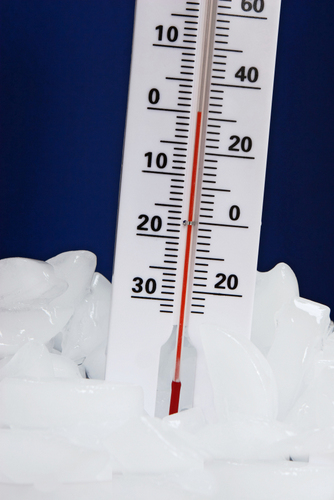Glacier thermal regime
While all ice is cold, some bits of glacier ice are colder than others. At normal atmospheric pressure, ice melts and freezes at 0°C. In some places, ice temperatures can be well below the melting point, possibly as low as -40°C.
Ice melts more easily if it is under pressure; the more pressure the ice is under, the lower the melting point and the easier it is to melt. For example, at the bottom of an ice sheet 2000m thick, ice would melt at -1.6°C instead of at 0°C. The melting point at any given pressure is called the pressure melting point, or PMP.
Glaciologists describe ice which is at the pressure melting point as warm ice. Warm ice is often wet, as ice at the PMP can co-exist with water at the PMP (which is also the freezing point). Ice below the PMP is known as cold ice, and it is dry as there is no liquid water present. It is not possible to have ice above the PMP, as it would have melted to liquid water.
